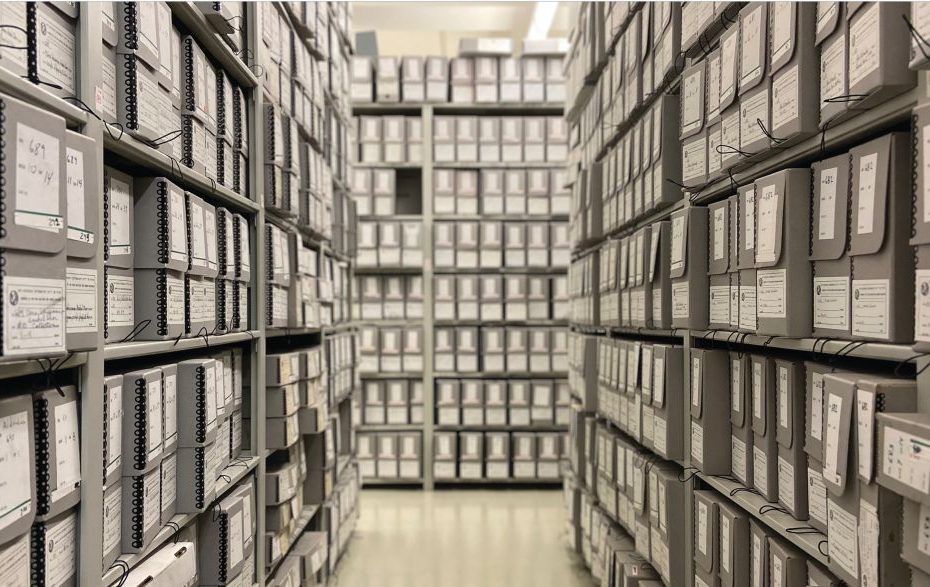It pains me to realize that for a dozen years I lived just one building away from the Center for Jewish History—formerly the Margaret Sanger Institute—and never took advantage of the extensive YIVO Institute for Jewish Research, which is currently celebrating its 100th anniversary.
Images Courtesy of the YIVO Institute for Jewish Research
The center has collected and digitized millions of artifacts, books and everyday ephemera that tell the story of Eastern European Jewish life, which are accessible to scholars and the public. Established in Vilna, Poland—which was Vilnius, Lithuania, when my grandfather lived there—in 1925 by Jewish intellectuals and preservationists, YIVO was the first comprehensive center for higher learning in the vortex of Jewish society and culture.
“YIVO’s logo—a circle containing stylized Yiddish letters spelling out ‘YIVO’—first appeared in 1928 on a booklet of receipts given to those who donated funds for its new building on Wiwulskiego Street in Vilna. The booklet was designed by Uma Olkienicki, a talented graphic artist who was also the director of YIVO’s Esther-Rachel Kaminska Yiddish Theater Museum. A modified version of the logo first began regularly appearing on the institute’s stationery and publications in about 1937. Its style reflects two avant garde art movements of the 1920s–1930s, Art Deco and Russian Constructivism.”
YIVO also played a crucial role in standardizing the Yiddish language, becoming the definitive source for linguistic matters. In the years before the rise of Nazism, YIVO opened branches in Berlin, Warsaw, Paris, London, St. Petersburg, New York, Chicago and Buenos Aires.
YIVO was also dedicated to the common people and daily life. Zamlers (amateur collectors), a network of devoted YIVO volunteers, gathered materials of quotidian life from Jews throughout Europe and around the world. Over the course of a century, YIVO’s mission to collect Jewish cultural material has yielded millions of artifacts and documents. Deposited at the Institute by Jews of all kinds—”from scholars to shoemakers, from rabbis to rabble”—these objects are the evidence that tell the tales of Jewish life and culture wherever Jews traveled, prospered and suffered.
To celebrate its landmark year, YIVO mounted the show Hail to the Zamlers: YIVO’s Collections at 100, on view until Dec. 31. The exhibit displays hundreds of examples from the archive of 24 million items with the accompanying book 100 Objects From the Collections of the YIVO Institute for Jewish Research, which explores Jewish history through the unique holdings. Profusely illustrated, the book features essays from leading scholars and YIVO staff.
I will forever regret that I did not take advantage of YIVO’s riches when we were neighbors (such proximity was too good to be true), but I urge those interested in all aspects of the European Jewish historical experience to take advantage of its treasures. (For an overview, watch the enticing video here.)
Roman Ketubah, a marriage contract that specified the obligations of a husband to his wife, 1833
Diary of Theodor Herzl, the father of modern Zionism. Vienna, Austria, 1882–1887
Scrapbook of anonymous Ex Libris. 228 pages, bound with a single red shoelace
Characters sculpted by Morris Strassberg for “Yoshe Kalb,” a box-office hit on the American Yiddish stage, performed in 1932
Set design by Heinz Condell for “Bronx Express,” a play by Osip Dymow, first produced in Berlin, 1919
The post The Daily Heller: 100 Years of Jewish History Through YIVO and Its Artifacts appeared first on PRINT Magazine.
